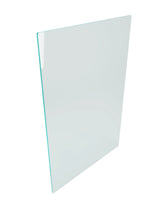A General Rule to Garden Fences and Property Lines
Typically, the 'left-hand' rule is applied when determining fence ownership in Australia. This rule states that when you stand at the front of your house looking towards your backyard, you technically own the fence on your left side. However, remember that this is more of a convention than a legal rule. It might not hold true for all properties, especially in older subdivisions, unique property arrangements, and varies by state.Understanding Dividing Fences
In Australia, a fence that separates two neighbouring properties is known as a dividing fence. The Dividing Fences Act governs its ownership, maintenance, and replacement.Shared Responsibility
A crucial point to note about dividing fences is that they are usually a shared responsibility between the neighbouring property owners. Both neighbours share the cost of constructing, repairing, or maintaining a dividing fence, unless one party wants a higher standard fence than necessary, in which case they need to pay the additional cost.Determining Ownership
If you're still uncertain about which side of the fence you own, there are a few steps you can take.1. Check Your Property Title
This document may contain details about your property boundaries and any fencing agreements with neighbours.2. Consult Your Local Council
They can provide you with useful information about local fencing laws and help clarify your situation.3. Seek Legal Advice
If there's a dispute about the fence's ownership, it may be wise to seek professional legal advice.Renovating Your Garden Fence
Once you've established ownership or shared responsibility for your garden fence, you can consider upgrading it. The material you choose for your fence will largely depend on the purpose of the fence and your personal aesthetic preference.PVC Fencing
PVC Hampton fencing is a sturdy, durable solution ideal for home properties, offering high security and longevity. Known for its robustness, it resists wear and tear from weather and impact, requiring minimal maintenance over time. Its versatility allows for various styles, from traditional picket designs to modern, sleek lines, making it suitable for different home aesthetics. With its blend of strength, durability, and aesthetic appeal, PVC fencing is a practical and stylish choice for homeowners seeking an effective barrier that enhances their property's curb appeal. The PVC fencing from Glass House AU has a special additive so it can withstand the harsh Australian weather. It won't’ rot, warp or split and there is virtually no maintenance needed.Aluminium Fencing
If you prefer a more traditional look, aluminium fencing might be the ideal choice. It's sturdy, corrosion-resistant, and available in a variety of colours and styles like Blade, Batten, Slat and Security Fencing.Communicating with Neighbours
When considering a fence upgrade, communication with your neighbours is crucial, especially for a dividing fence. Ensure you discuss your plans with them, agree on the type of fence, and confirm arrangements for shared costs. Rounding Up Our Tips on Which Side of the Garden Fence You Own Determining which side of the garden fence you own can be a bit complex, given the shared nature of dividing fences and variations in property arrangements.
However, by checking your property title, consulting with local councils, and potentially seeking legal advice, you can clarify ownership and responsibilities. Once that's done, the exciting part begins - choosing your new fence. Whether you opt for the sleek elegance of steel or the traditional appeal of aluminium, upgrading your fence can make a significant difference to your property's aesthetic and value.
At Glass House AU, we're here to guide you through this process, ensuring your new fence is everything you want it to be, meeting all regulatory standards, and causing minimal disruption to you and your neighbours.






